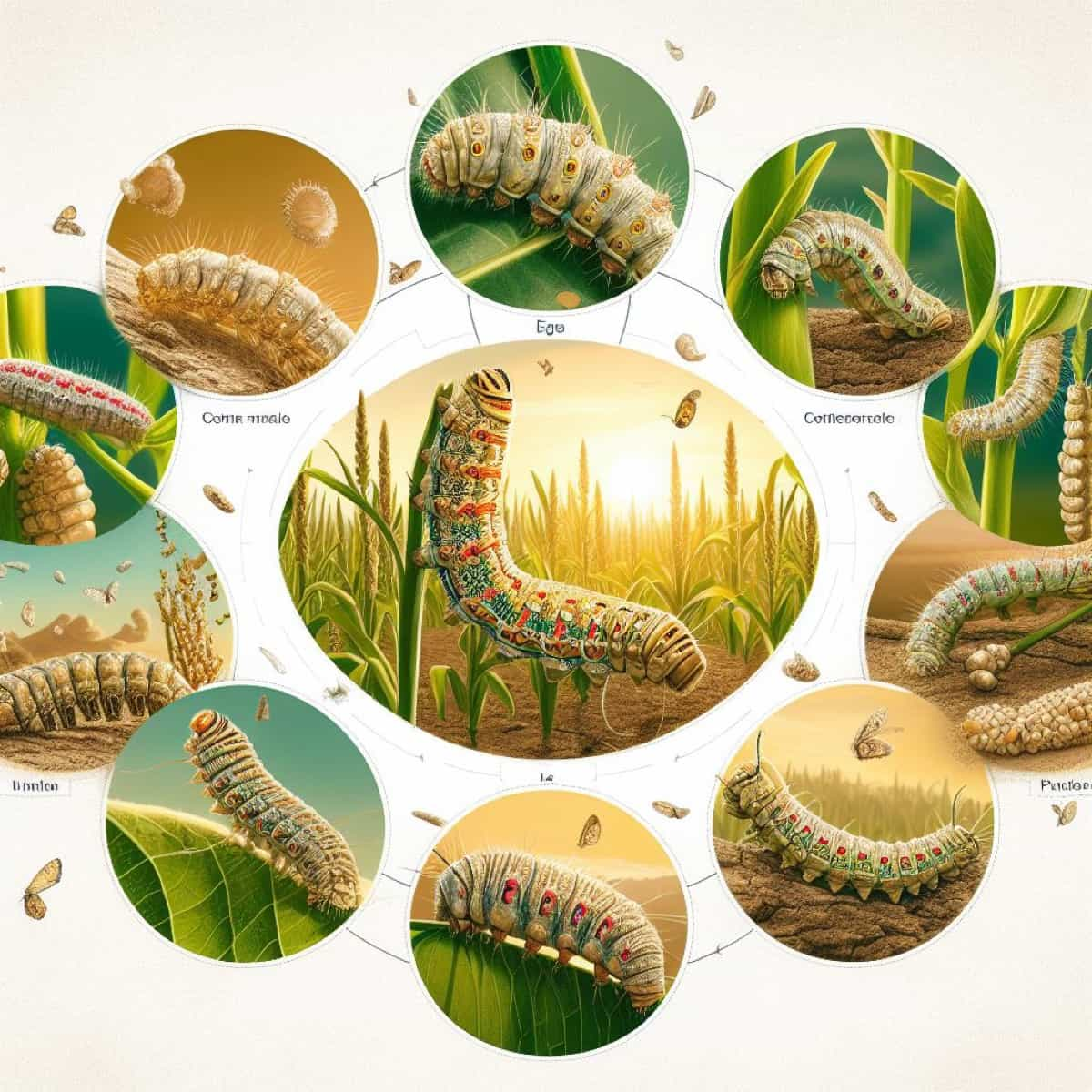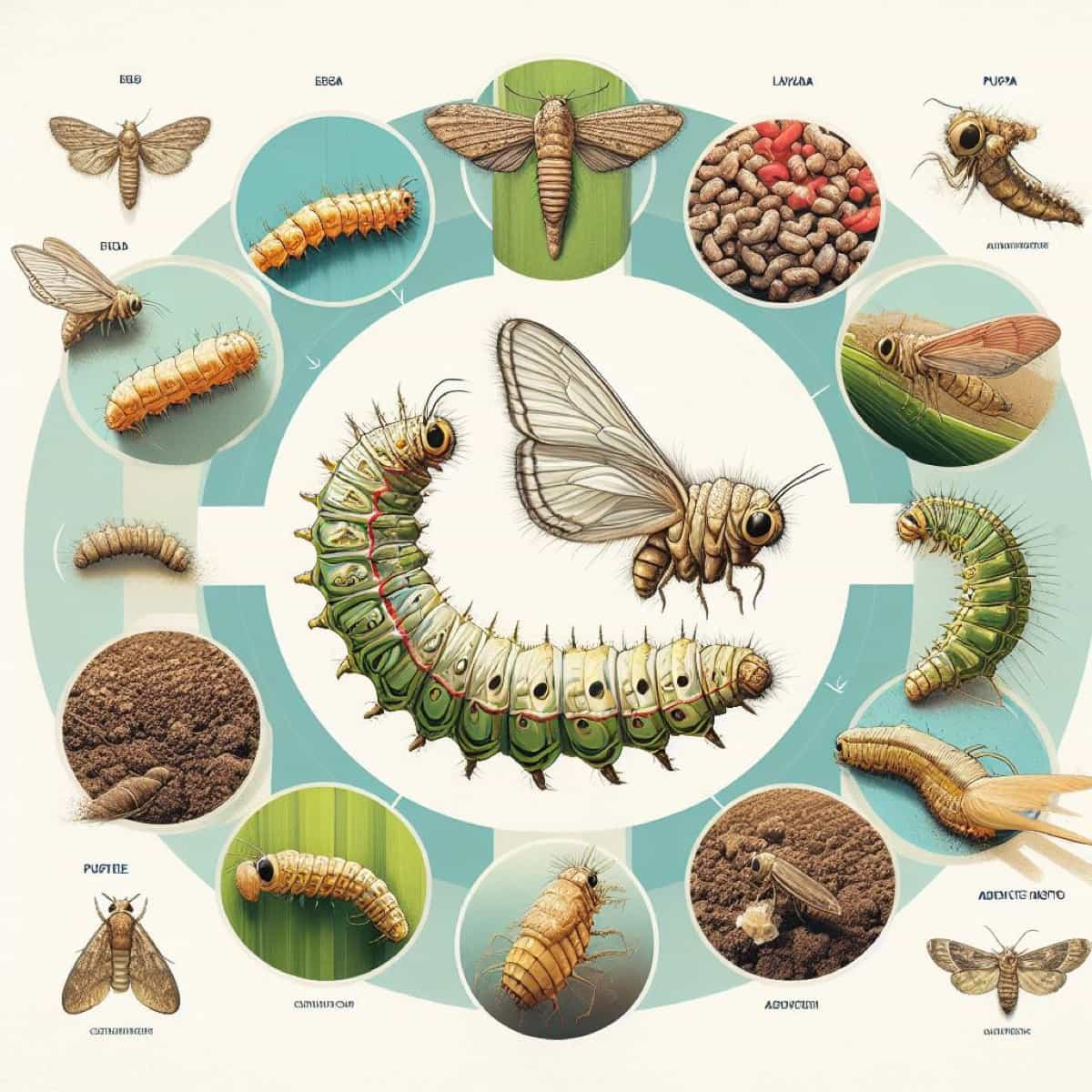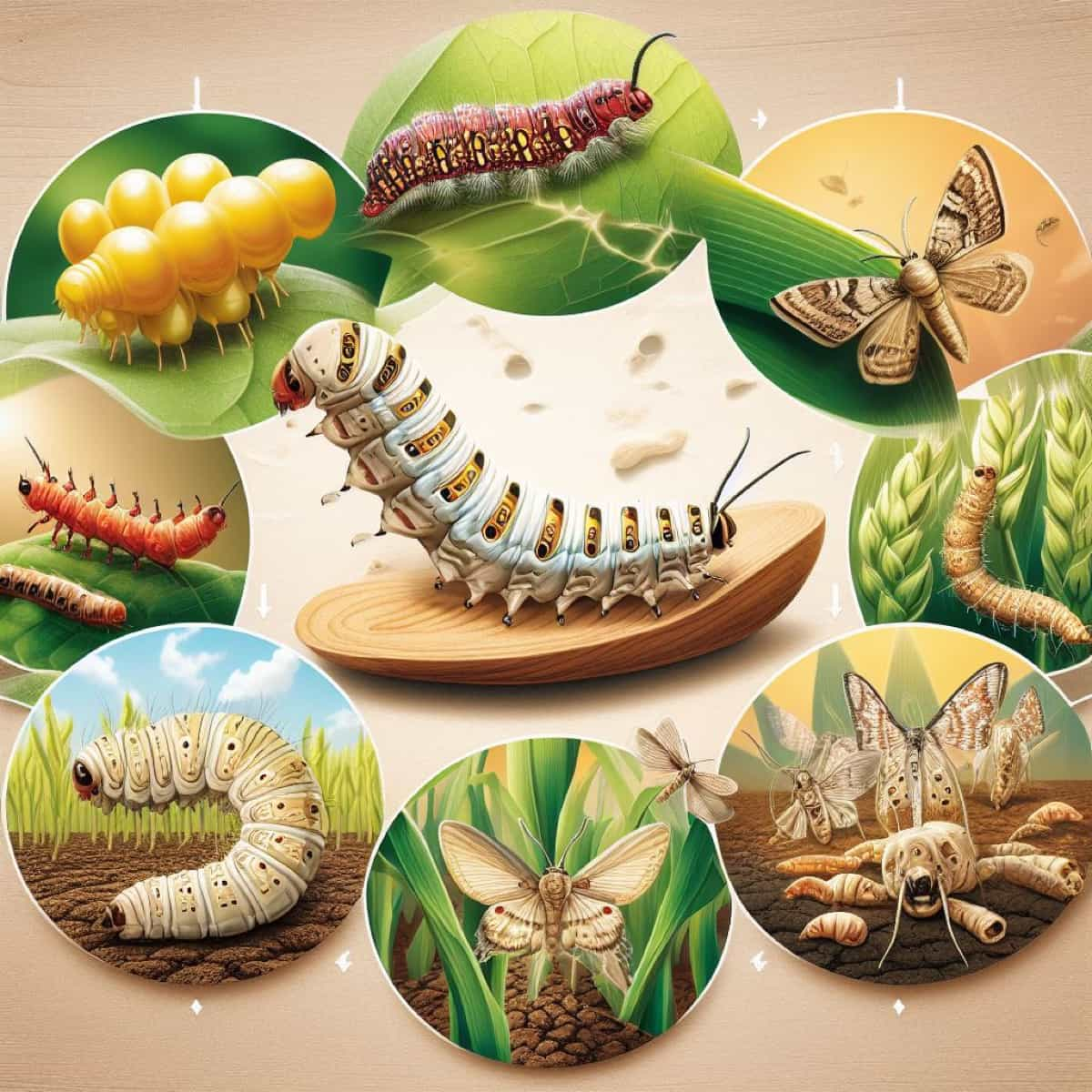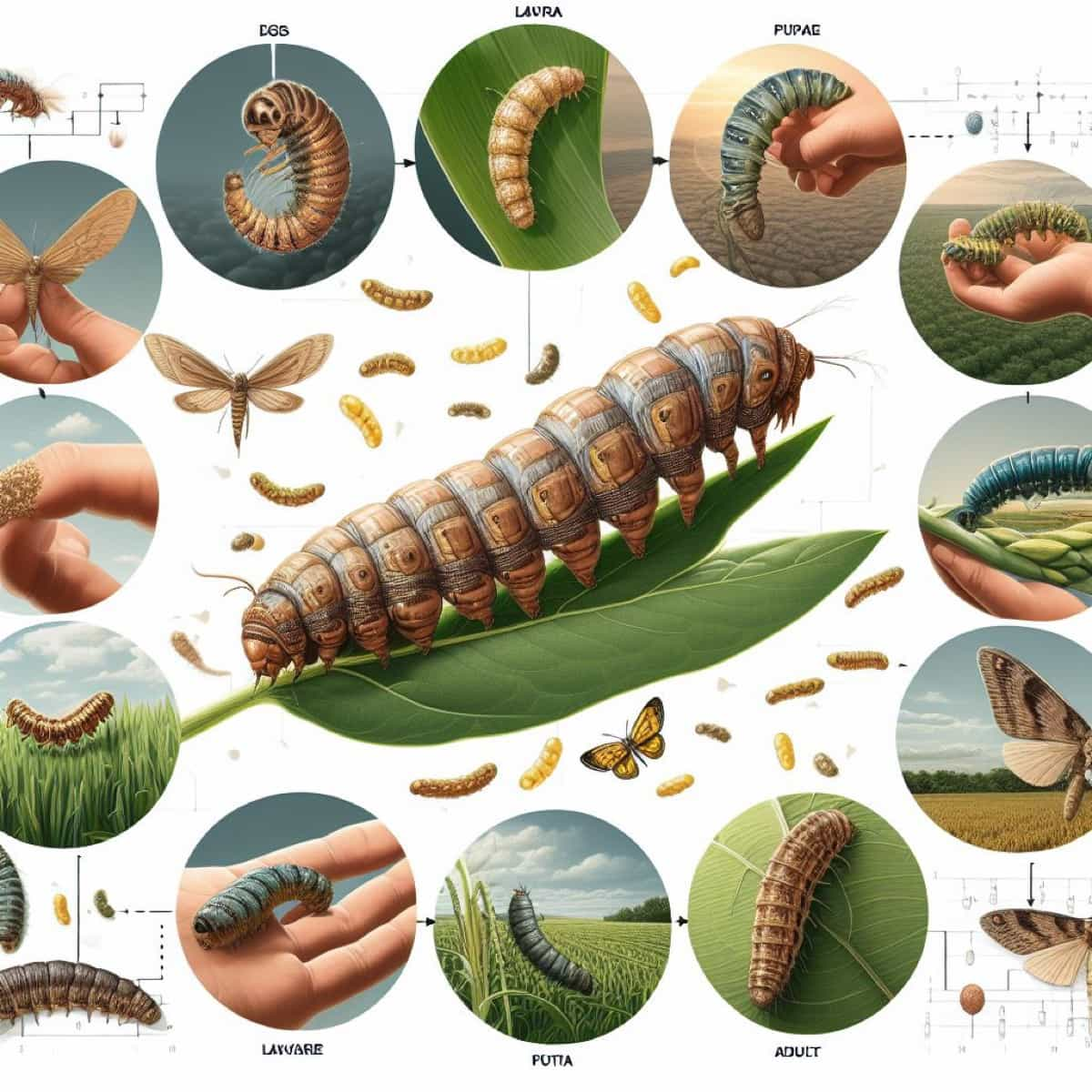Welcome to the realm of fall armyworm prevention through cultural control methods, a strategic approach for safeguarding crops. This guide explores best practices to curb the menace of fall armyworms, emphasizing sustainable and cultural interventions over chemical solutions. Cultural control involves altering farming practices to disrupt the pest’s life cycle.

From crop rotation and intercropping to natural enemies and trap crops, we delve into effective, eco-friendly strategies. By embracing these practices, farmers can mitigate fall armyworm damage while promoting long-term agricultural resilience. Let’s embark on a journey to cultivate healthier crops through informed cultural control methods.
Cultural Control Methods for Fall Armyworms
Crop Rotation
Crop rotation is a crucial cultural control method for preventing Fall Armyworm infestations. By alternating crops each season, we disrupt the life cycle of these pests, limiting their access to preferred host plants. This practice helps break the cycle of infestation and reduces the buildup of pest populations.
Additionally, planting Fall Armyworm-resistant crops during vulnerable periods enhances natural defenses. Integrated with other cultural control methods, such as timely planting and sanitation, crop rotation forms a sustainable strategy that minimizes the reliance on chemical interventions, promoting long-term resilience in agriculture.
Intercropping
Intercropping is a strategic cultural control method for preventing Fall Armyworm infestations. By planting different crops in proximity, you disrupt the pest’s preferred environment, making it harder for them to establish and spread. Diversified crops also confuse the armyworms, reducing the risk of large-scale damage.
In case you missed it: Wheat Armyworm Management in Wheat: Symptoms, Treatment, Chemical, Biological, Natural, and Organic Control

Additionally, certain companion plants can act as natural repellents. This method not only minimizes reliance on chemical solutions but also promotes a sustainable and holistic approach to pest management, ensuring the health of your crops and the overall resilience of your agricultural system.
Trap Cropping
Trap cropping is a strategic method in fall armyworm control, where specific plants are grown to attract and trap the pests away from the main crops. This culturally sustainable approach minimizes the need for chemical interventions. Choose plants that entice fall armyworms but aren’t primary crops. Utilize a diverse array of trap crops to disrupt the insect’s life cycle. Regularly monitor and remove infested trap plants to prevent migration. This integrated approach is effective, environmentally friendly, and aids in preserving crop health without extensive pesticide use.
Conservation Tillage
Conservation tillage is an environmentally friendly way to grow that keeps crop residues in the soil and disturbs it as little as possible. This method enhances soil health water retention, and reduces erosion. When combating Fall Armyworms, cultural control methods are key. Employ diverse crops, intercropping, and crop rotation to disrupt their life cycle.
Plant early-maturing varieties to avoid peak infestation periods. Implement natural enemies like predators and parasites. By combining conservation tillage with these cultural strategies, farmers promote ecological balance, fostering a resilient and pest-resistant agricultural ecosystem while conserving soil and water resources.
Biological Control Agents
Biological Control Agents and Cultural Methods are key in preventing Fall Armyworm infestations sustainably. Introduce natural predators like parasitic wasps and predators, such as ladybugs, to keep the Fall Armyworm population in check. Foster a diverse ecosystem to attract beneficial insects.
Culturally, practice crop rotation to disrupt the pest’s life cycle and utilize resistant crop varieties. Implementing proper sanitation measures, like removing crop residues, reduces overwintering sites. Combine these strategies for a holistic approach, minimizing reliance on pesticides and ensuring effective, environmentally friendly Fall Armyworm prevention.
Beneficial Insects
Beneficial insects play a vital role in controlling Fall Armyworms, a notorious agricultural pest. Deploying natural predators like parasitic wasps, ladybugs, and predatory beetles helps maintain a balanced ecosystem, reducing Fall Armyworm populations. Cultural control methods enhance prevention: practice crop rotation to disrupt their life cycle, encouraging natural enemies.
In case you missed it: Management of Beet Armyworm in Spinach: Symptoms, Treatment, Chemical, Biological, Natural, and Organic Control

Planting diverse crops discourages infestations. Implement early detection through pheromone traps and regular field monitoring. Promote soil health with organic amendments to create an environment less favorable for Fall Armyworms. This integrated approach, leveraging beneficial insects and cultural practices, proves effective in sustainable Fall Armyworm prevention.
Habitat Modification
Habitat modification and cultural control methods are crucial in preventing Fall Armyworm infestations. Implementing diverse crop rotations disrupts the pest’s life cycle, reducing its prevalence. Interplanting with companion crops that repel or deter Fall Armyworms fosters a less favorable habitat.
Promote natural enemies like predatory insects and birds to enhance biological control. Timely and thorough field sanitation, removing crop residues after harvest, reduces overwintering sites. Implementing these practices collectively creates an inhospitable environment for Fall Armyworms, mitigating the need for chemical interventions and ensuring sustainable, long-term pest management.
Weed Management
Cultural control methods are crucial for effective fall armyworm weed management. To prevent infestations, encourage natural predators like birds and beneficial insects. Diversify crops to disrupt fall armyworm breeding patterns, reducing their impact. Planting resistant crop varieties and implementing crop rotation strategies can impede the pests’ lifecycle.
Additionally, timely and proper irrigation helps mitigate fall armyworm damage. Regular monitoring of fields enables early detection, allowing for swift intervention. By integrating these cultural practices into your weed management plan, you create a holistic defense against fall armyworms, promoting sustainable and resilient agricultural practices.
Sanitation Practices
- Adopt effective sanitation practices and cultural control methods.
- Start by removing crop residues promptly, as these can harbor larvae.
- Rotate crops to disrupt their life cycle and reduce infestation risk.
- Employ early planting to avoid peak infestation periods.
- Encourage natural enemies like parasitoids and predators.
- Implement pheromone traps for monitoring and early detection.
- Utilize biopesticides derived from natural sources.
- Regularly scout for egg masses and larvae, manually removing them when spotted.
In case you missed it: Armyworms Management in Eggplant: Symptoms, Treatment, Chemical, Biological, Natural, and Organic Control

Cultural Practices and Timing
Effective cultural practices are vital for combating Fall Armyworm infestations. Planting resistant crop varieties and practicing crop rotation disrupt the life cycle of these pests. Timely planting and adjusting planting dates to avoid peak moth activity reduce vulnerability. Employing trap crops diverts the pests away from the main crops.
Encourage natural enemies like predators and parasites through habitat management. Regular field monitoring helps detect early signs of infestation, allowing for prompt intervention. Combining these cultural practices enhances the overall resilience of crops against Fall Armyworms, promoting sustainable pest management for healthier agricultural yields.
Conclusion
In conclusion, strategic cultural control methods, from crop rotation to habitat management, empower farmers in the fight against Fall Armyworms, ensuring sustainable pest management and resilient agricultural yields.
- Beneficial Insects in Pest Management
- Natural Solutions for Pest Control in Flower Gardens
- Types of Fungicides Used in Agriculture
- Common Issues in the Fruit Development Stage of Pomegranate Farming
- Fruit Development Issues in Papaya: Easy Solutions and Treatment
- Soil-Borne Diseases and How to Protect Your Plants
- Practices to Prevent Disease Spread in the Garden
- From Wilted to Thriving: How to Treat Root Rot Naturally in Houseplants
- Natural Remedies to Cure Brown Spots on Fig Tree Leaves